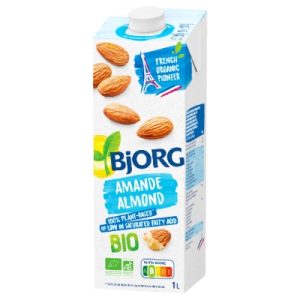Vegan caramelized onion pasta recipe
Out of stock
This 9-Ingredient Vegan Caramelized Onion Pasta is bursting with umami from quick-caramelized onions, tomato paste, sundried tomatoes, and a handful of other pantry staples. Easy enough for weeknight dinners and loved by vegans and omnivores alike!
Prep: 10 min
Cook: 40 min
INGREDIENTS
▢2 tablespoons extra virgin olive oil
▢2 medium yellow onions, very thinly sliced
▢Water to deglaze the pan
▢4 garlic cloves, thinly sliced
▢Kosher salt or sea salt to taste
▢Freshly cracked black pepper to taste
▢1 teaspoon red pepper flakes
▢1 teaspoon dried oregano
▢1 5.3-ounce (150g) tube of tomato paste (not canned tomato paste)
▢2 tablespoons tamari (or soy sauce)
▢2 tablespoons nutritional yeast
▢4 – 5 large oil-packed sundried tomatoes, finely chopped
▢10 ounces (285g) spaghetti or linguine (can use gluten-free)
Optional garnishes
▢Toasted pine nuts; chopped flat-leaf Italian parsley
INSTRUCTIONS
Heat a 12-inch skillet or Dutch oven somewhere between medium-high and high heat. Add the olive oil, and once it’s hot, add the thinly sliced onions and season with salt and pepper. Stir frequently and cook the onions until a light brown fond starts to form on the surface of the pan, about 5 minutes. Add a few spoons of water to deglaze the pan. Continue cooking the onions, adding more water every few minutes and stirring frequently to prevent burning, until they’re deeply golden brown, about 15 minutes.
Reduce the heat to medium and stir in the sliced garlic cloves. Stir frequently, adding water as needed to deglaze. Cook for another 5-10 minutes until the onions are fully caramelized and the garlic is golden and soft.
Add the red pepper flakes and oregano, and stir to coat the onions, about 30 seconds. Add the tomato paste and stir constantly, or until the paste has caramelized and become darker, 2-3 minutes.
Add the tamari, nutritional yeast, and chopped sundried tomatoes and stir to combine. Turn the heat to low.
Ladle a few spoons of the reserved pasta water into the caramelized onions. Then transfer the hot cooked pasta to the onions. Use a pair of tongs to swirl the pasta into the sauce, adding more pasta water as needed (I usually add ¾-1 cup) until you can coat all of the noodles in the tomato-y sauce. This whole process usually takes 3-4 minutes.
If desired, garnish with pine nuts and chopped parsley. Leftovers stay good in an airtight container for 2-3 days.
Ingredient Rundown
This ingredient rundown is basically a way for me to count the ways in which this vegan caramelized onion pasta delivers on its promise of being an umami explosion.
1. Caramelized onions. When you caramelize onions, you’re witnessing the Maillard reaction, which is a chemical reaction that happens when certain food is heated. Amino acids and reducing sugars react, resulting in the food browning, whether it’s through grilling vegetables or caramelizing onions. And this reaction results in a meaty flavor and savory mouthfeel, aka umami!
Tip: Slice your onions very thinly and try to get them evenly sliced as you can. No need to break out the mandoline (unless it’s handy and easy to use), but no sloppy rough slicing either. More tips on caramelizing onions are in the next section.
2. Tomato paste. Tomato paste packs in an umami punch with its bold, concentrated tomato-y flavor. But we’re not treating tomato paste as it’s often treated – simply stirred into a soup or sauce at the end as an afterthought.
No, no, no. We’re cooking it down after the onions are caramelized, essentially caramelizing the tomato paste itself. This unlocks the full potential of the tomato paste and brings forth its boldest flavor. Think of it almost as if you would think of sautéing aromatics – it’s another opportunity to layer in some flavor.
3. Tamari. Also brings those glutamate-y, umami flavors, along with saltiness. I usually use reduced-sodium tamari or soy sauce, but this is a recipe where the bold, salty flavor of regular tamari/soy sauce works well. Aside from seasoning the onions with salt at the start of cooking, there’s no need for more salt thanks to the tamari.
4. Nutritional Yeast. Your vegan source of subtle cheesy, umami notes.
5. Sundried Tomatoes. One of my actual favorite foods that I do not utilize enough. They bring the most delightful chewy texture, and a salty-yet-slightly-sweet flavor. I recommend using olive oil-packed sundried tomatoes because I think they’re more flavorful than the dry packaged ones and they work really well in this recipe.
Tips for making Vegan Caramelized Onion Pasta
1. Caramelizing onions at high heat. Typically, caramelized onions are cooked over low heat to prevent burning. But, that can take up to an hour, and given that this is a “pantry meal,” I assume you don’t want to spend an hour caramelizing onions.
So we’re caramelizing the onions somewhere between medium-high and high heat. Every stove is different, so that’s why I give the range. Please use your eyes as you go to adjust the heat as needed.
The trick to caramelizing onions at a higher heat is to deglaze the pan every couple minutes with a few spoons of water. If you skip this step, the onions will burn and you will be left with blackened, burned onions, not gooey, sticky browned onions.
After heating the olive oil, add the thinly sliced onions and cook, stirring frequently, for about 5 minutes, or until some fond starts to appear. Fond is basically the browned bits that stick to the bottom of the pan. That’s when you start deglazing the pan with water – just a few spoons at a time. Stir frequently, and continue deglazing in this manner every few minutes.
After about 15 minutes, the onions should be deeply golden brown. That’s when you lower the add the thinly sliced garlic cloves (I lower the heat to medium to prevent burning). After another 5-10 minutes of stirring and deglazing, the onions will be fully caramelized and the garlic will be golden and soft.
2. Use all of the tomato paste. An entire tube of tomato paste sounds like a lot, but (1) it’s what brings the sauce together (there’s no tomato sauce, diced tomatoes, etc.); and (2) everyone’s always wondering what to do with a leftover tomato paste…well know you don’t have to worry about that! As mentioned earlier, make sure you cook the tomato paste for a few minutes until it turns darker in color – this caramelization is what unlocks the deepest tomato flavor.
3. Use tomato paste in a tube, not a can! Tomato pastes are NOT created equally. When you’re using so much tomato paste, the tinny metallic flavor from the canned tomato paste comes through (not great). Plus, the way tomato paste from a tube is made and preserved makes it more flavorful and gives it a brighter and truer tomato flavor. Read more here about tomato paste differences at The Kitchn.
4. How to time this recipe. Add the pasta to your boiling salted water when you add the garlic to the onions. Depending on the cook time of your pasta, the tomato-y caramelized onions should be done around the same time as the pasta.
5. Reserve the pasta water. Before you drain the pasta, save some of that cooking water. For one, the pasta leeches some of its starch into the cooking water, so it’s starchy. And two, since the water has been salted, it’s a bit flavorful. Adding some of this starchy, salty water to the tomato-y caramelized onions will help thin it out enough into a sauce.
6. Make it heartier. If pasta doesn’t seem like a complete meal too you, make it heartier by adding some cooked or canned cannellini beans at the end. And my favorite toppings are toasted pine nuts, which add this lovely buttery crunch, and freshly chopped flat-leaf parsley for some freshness.
I recommend reserving at least 1 cup of the water. I typically use ¾ – 1 cup of cooking water, but just add as much as you need to coat the sauce onto all of the noodles. This is not a saucy pasta – it’s more of a rough, chunky tapenade so you don’t want to thin it out to the point of marinara sauce.
A pair of tongs is very helpful to help twirl the noodles and coat the sauce onto each noodle.
You must be logged in to post a review.
General Inquiries
There are no inquiries yet.










Reviews
There are no reviews yet.